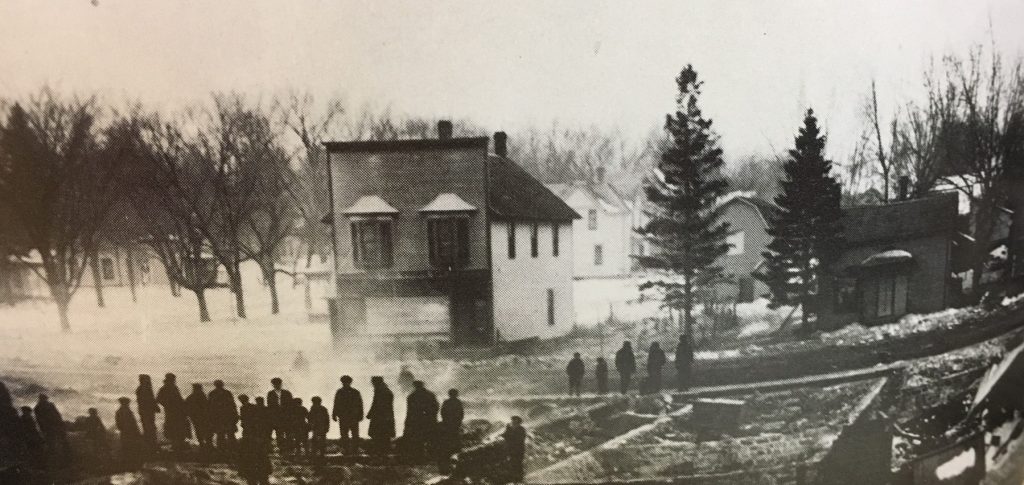Floyd County Fires and Another Auspicious Event of 1862
Charles City, Floyd County, Iowa
In Clement L. Webster’s thorough history of Floyd County’s rocks, insects, plants, and people (from prehistoric to nineteenth-century settlers), he writes of the prairie fires that occurred every fall and spring. In nineteenth-century settlers’ memories, like his own, these fires were especially intense in 1862 and 1867. “All the long weeks during the fall,” he explains, “the air would be hazy with smoke from prairie fires either nearby or far away and always accompanied by that peculiar odor of burned wild grass which filled the air.” Wild, dangerous, and also beautiful, “these fires always burned and advanced in a broad V shaped form—broadening and widening as it advanced, and would sometimes jump twenty to forty rods, ‘catch’ and continue on.” Winds would drive the fire for miles in one direction and then suddenly shift direction. A person could see a fire miles away, note the wind blowing away from her home, sit down to dinner, and then find smoke pouring into the room before the plates were emptied. The fire would have turned and surrounded the house, taking the livestock, the grain, and then the house itself.
Men, women, and children all fought the fires, he remembers. “All were nearly roasted and blistered by the fierce heat and blackened by the dense smoke….Beyond, the prairies were black and dead, covered with ashes of the burned grass, and whirlwinds passed hither and thither over it carrying great black columns of ashes far up into the clouds. The roar of the fire in the tall grass and the heavy smoke could only be withstood by those accustomed to them.
Fires often started, he observes, because a farmer’s attempt to burn a firebreak around his property got away from him or because of sheer human cussedness.
In 1862 fire was not confined to the open prairie. The town of Charles City was largely destroyed by fire October 23, 1862. Two hotels, nine businesses, six stores, two jewelry shops, one tailor shop, and one law office were lost. Only two businesses were insured.
1862 marks an end of a different sort as well. Mary (Molly) Leonard Leaman recalled that the “Winnebago” (HoChunk) returned to the Charles City site for hunting and fishing every year until 1862. They had earlier attempted to establish a camp on Clear Lake but were attacked, apparently by members of the “Sioux” (Lakota/Dakota). In Leaman’s memory this violence drove the HoChunk back to the Charles City site on the Cedar River that had been their home. A HoChunk village of 150 homes had been in place in 1850 when pioneer Joseph Kelly first appeared. One history observes that “no one who knows the beautiful valley of the Cedar River will wonder at the strong attachment for it manifested by” native people.

Sources: SHSI: Clement L. Webster, History of Floyd County Iowa, Charles City, 1897; Past Harvests: A History of Floyd County to 1996, eds. Cameron W. Hanson and Heather M. Hull; Mary Leonard Leaman diary excerpted as “Molly’s Memories” in “Floyd County Heritage” newsletter, 22.4, 1993; “Floyd County Centennial Centurama” 1854-1954.
